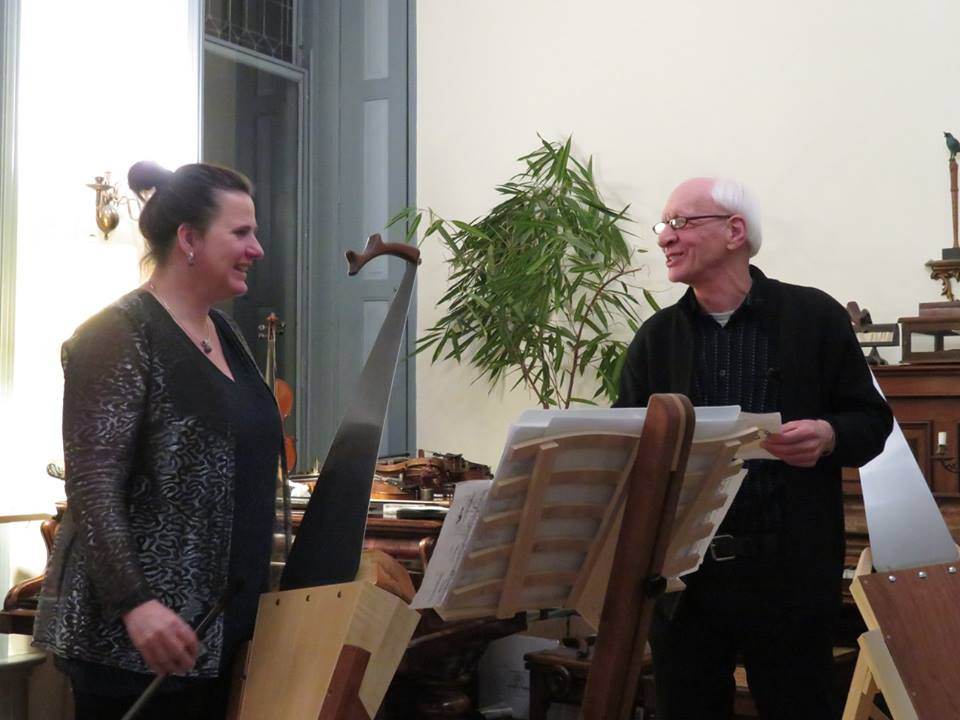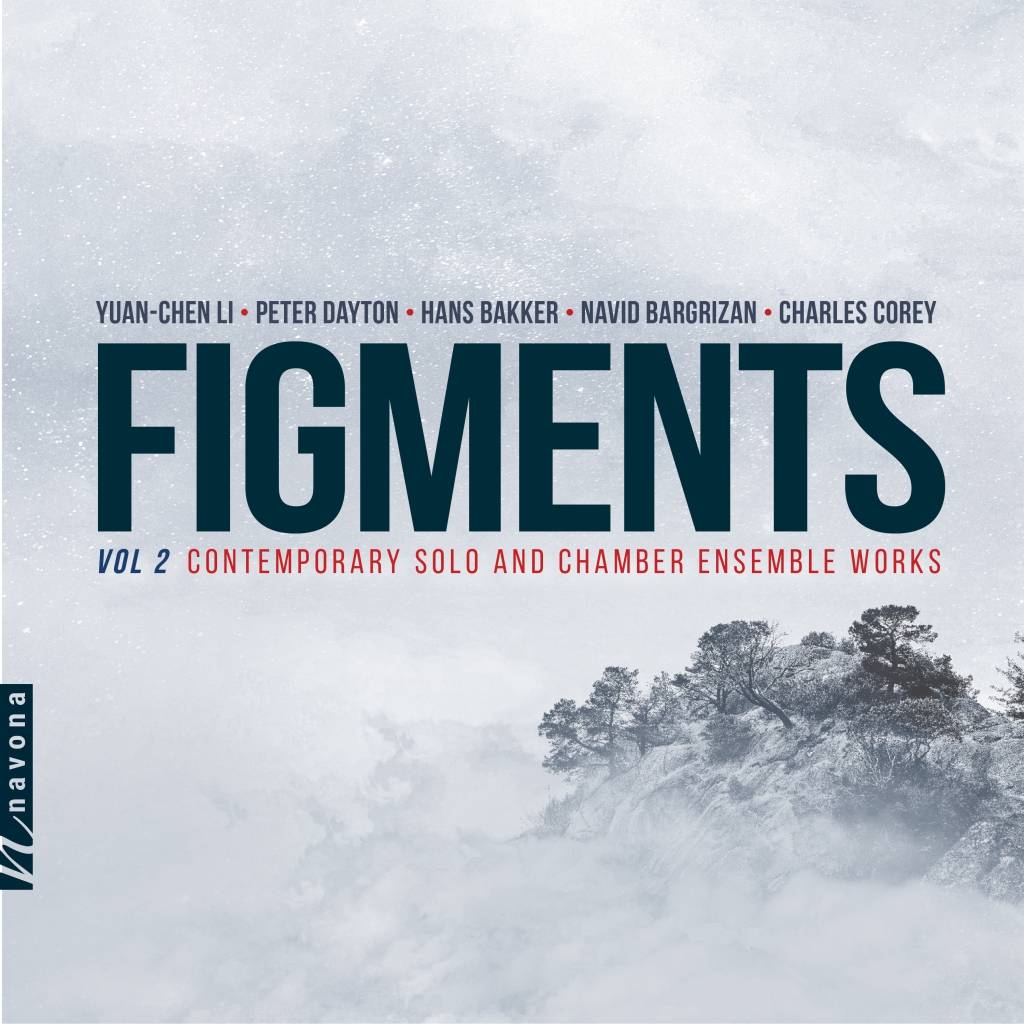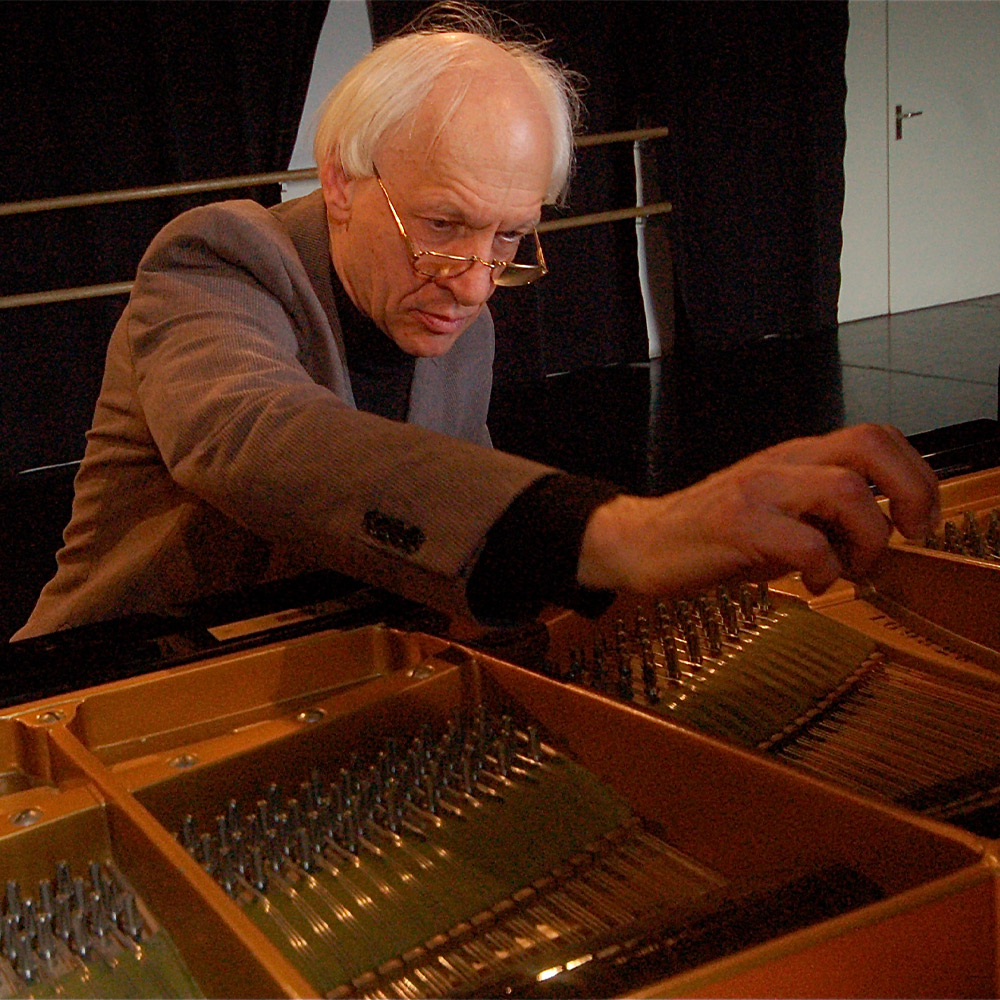
After finishing his studies in piano, church organ, and choral conducting in Utrecht, Hans Bakker began teaching piano at music schools in two places in the Netherlands. Apart from his teaching practice, he conducted two choirs and was active in the improvisational music scene. His career in music was followed by the study of Sanskrit at the University of Amsterdam. After his successful graduation, he returned to music and was completely absorbed by teaching at the Globe Center for Art and Culture in the city of Hilversum.
Initially, composing was only a minor occupation next to Hans’s other work. Starting in 1997 it became a daily routine; he wrote a great number of chamber music works and many choir compositions, including the cycle of choirs Praśasti. He also composed works for orchestra and six pieces for carillon, and recently the commissioned Violin Concerto KAIROS.
His first album, THE UNNAMED SOURCE (2010), features moving performances by the Moravian Philharmonic Orchestra under conductor Vit Micka and an astounding array of the orchestra’s instrumentalists. Since then, Bakker’s works have been featured numerous Navona albums, the latest including the albums TOMORROW’S AIR (2017), which shows that classical music can hit a greater audience; LEGENDS & LIGHT (2018), including Canzona III Hidden in Her Light for orchestra; and his latest release on FIGMENTS 2.
Today, Hans is our featured artist in “The Inside Story,” a blog series exploring the inner workings and personalities of our artists. Read on to discover where Hans finds creative inspiration…
What inspires you to write and/or perform?
More than 20 years ago the source of my music started to flow after I became acquainted with the writings of the German painter and writer Joseph Anton Schneiderfranken, also known as Bô Yin Râ. Based on this inspiration, my intention as a composer is to share a (musical) message with its receptive listeners, to please them, or to fascinate or touch them.
If you could collaborate with anyone, who would it be?
I am happy to work with cellist Annette Scholten, a pioneer in the development of the lame sonore. The preludes Dare Voce I & II are dedicated to her, as well as Miniature with a piano, and the brand-new trio piece Spark. In addition, my collaboration with Tatakh Huismans and Ruud Harte led to the Tiento II and I on the album FIGMENTS 2, while Ruud is now preparing for the premiere of Prelude and Ballade for guitar solo.
Do you have any specific hopes about what this album will mean to listeners?
With this album’s varied content, I hope it offers room for listeners to develop their own thoughts and feelings about the subject, but also – at best – can serve the listener as a tool to come to him or herself.
How have your influences changed as you grow as a musician?
My growing process as a composer never stops, but evolves along with the music genres, instruments, instrumentalists, and ensembles for which I write. I also make sure to gain exposure to many useful influences regarding the given subject matter.
What are your other passions besides music?
To charge my battery, I often go for a walk with my wife in the province of South Limburg, in the hilly Euroregion between Aachen, Germany, and Maastricht, The Netherlands or one of the Greek islands. I also regularly attend meetings at my Chess Club every Friday evening to compete.
Who are your musical mentors?
Bach is always a great source of inspiration for me, along with the musical language of Brahms, Janáček, Stravinsky, and Prokofiev. I like Poulenc very much and I am a big fan of the Russian composer Scriabin, in whose music I have completely immersed myself for a couple of years.

Tiento I and II on FIGMENTS 2 is now available for streaming or purchase through Navona Records. Click here to explore this new album.

After he finished his studies piano, church organ, and choral conducting at the Dutch Institute for Church Music in Utrecht, Hans Bakker (b. 1945) worked as a teacher at two music schools in the Netherlands. He also conducted two choirs and was active in the improvisational music scene. His career in music was followed by the study of Sanskrit. After obtaining his master's degree at the University of Amsterdam, he returned to music, becoming completely occupied by teaching at Globe Center for Art and Culture in the city of Hilversum.
